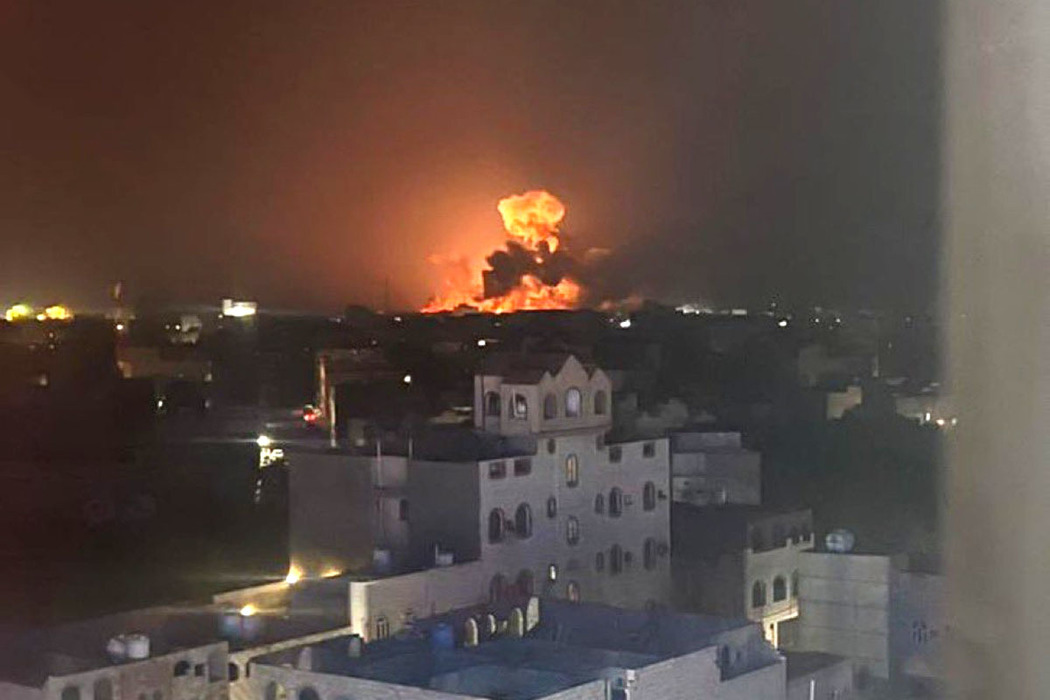Biden was taken for one place: America switched from Ukraine to Yemen
[ad_1]
Not forever yet – but in the future there may be less surprises
Sometimes random coincidences aren’t really random coincidences at all. Washington announced the cessation of assistance to Ukraine – the United States has run out of money for this purpose. And almost simultaneously, Washington announced missile attacks on Yemen. America is fine with money for these purposes (or, more accurately, for defeating these purposes). The conclusion that most obviously suggests itself – the world hegemon is running out of resources and, planning the further distribution of these resources, he made a choice not in favor of official Kyiv – is incorrect. Zelensky could well have refrained from humiliatingly begging for money with references to the bitter fate of Ukrainian pensioners. The Yankees will give him money – but only a little later. But this purely coincidental temporary coincidence of two events is not a coincidence: participation in the conflict in Ukraine is a matter of choice for the United States. But in the case of the conflict in Yemen, what is at stake for the Americans is indeed their vital strategic interests.
Back in December 2008, during a “Conversation with Vladimir Putin,” one of the callers asked the then Prime Minister of the Russian Federation: is it true that he promised to “hang Saakashvili” for one seat? Vladimir Vladimirovich, who respects this style of humor, replied: “Why for one thing?” This story provides a comprehensive picture of why Biden decided to start yet another military conflict in the powder keg that is the Middle East today. The US President was not just “taken for one place” – he was taken for all possible vulnerabilities.
And one shouldn’t be too surprised that such a not very powerful country like Yemen succeeded. Behind the conflict between the West and Yemeni political forces, in reality, another conflict is hidden – larger and more long-lasting. This conflict destroyed the political career of US President Jimmy Carter and almost destroyed the political career of his successor Ronald Reagan. This conflict calmed down considerably under Obama and flared up again under Trump. But enough hints. We are, naturally, talking about the confrontation between the United States and the Islamic Republic of Iran.
Before the Islamic Revolution in Iran in 1979, Tehran and Washington were very close allies and partners. But then love gave way to hatred. The two countries are in a violent conflict – on the verge or even beyond the point of foul. True, this is mostly done not directly, but indirectly. To use fashionable modern political jargon, a proxy war has been raging between the United States and Iran for a long time – a war by proxy on the territory of third countries in the form of an internal conflict in these very third countries.
Now the first place among these “third countries” is taken by such a state entity as Yemen. The specificity of Yemeni politics is that everything in it is always bad, thank God. An illustrative case from the end of the first Cold War. There were officially two Yemenis at that time: a pro-Western one with its capital in Sana’a and a pro-Soviet one with its capital in Aden. And so in 1986, the president of pro-Soviet Yemen, Ali Nasser Mohammed, decided to deal with his internal party opponents. It was planned to do this during their sudden execution right at a Politburo meeting. But the president’s opponents from among the members of the Politburo were also no strangers and put up armed resistance. As a result, this first resulted in a massacre in the meeting room, and then in the outbreak of civil war.
Such Yemeni political mores predetermined the virtual disintegration of the country in the modern era and its transformation into an arena for indirect showdowns between foreign states. In the very recent past, the main one of these showdowns was the conflict between Iran and Saudi Arabia. Wanting to ensure hegemony along the perimeter of their borders, the Saudis tried to pin down the pro-Iranian Houthi movement. But they didn’t succeed. And the Houthis found for themselves (or were found for them) a new object of effort – the United States. Vital trade routes for all world shipping in principle and for America in particular pass through the Red Sea. And now they are under the gun. Correction: in the targeted fire zone.
The United States, of course, could only respond to this with its own targeted fire. And let’s see which of these oncoming lights will be more effective. And I’m afraid that, apart from this vague phrase, it is almost impossible to say anything about the upcoming outcome of a new (or, rather, not entirely new) conflict at this stage. There are too many potential forks and potential geopolitical booby traps ahead—dangerous even for such a powerful power as the United States. And yes, I’ll state the obvious again: the more America is busy in the Middle East, the less attention it will pay to Ukraine. Thanks, as they say, to “Iranian friends.”
[ad_2]
Source link









